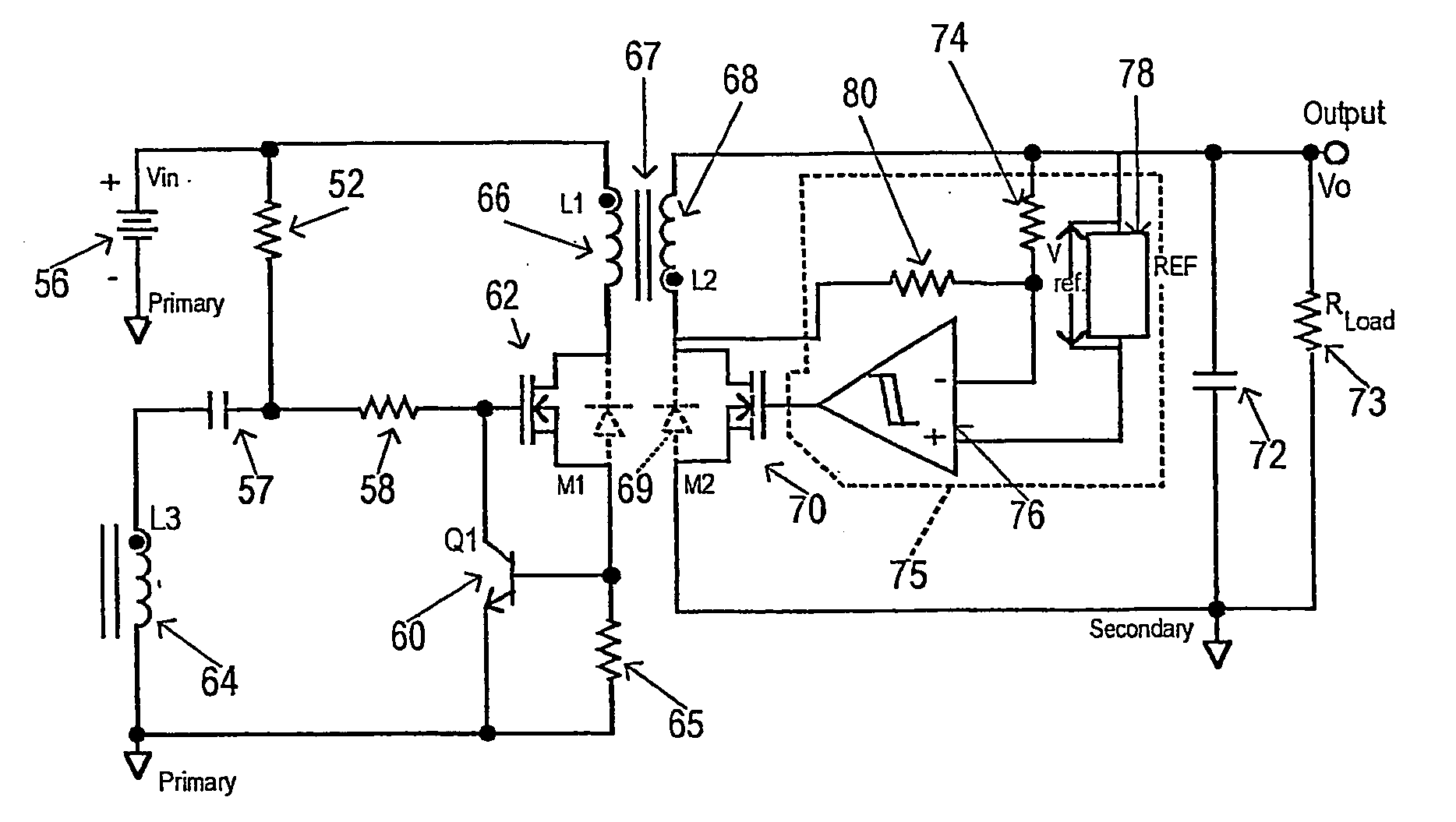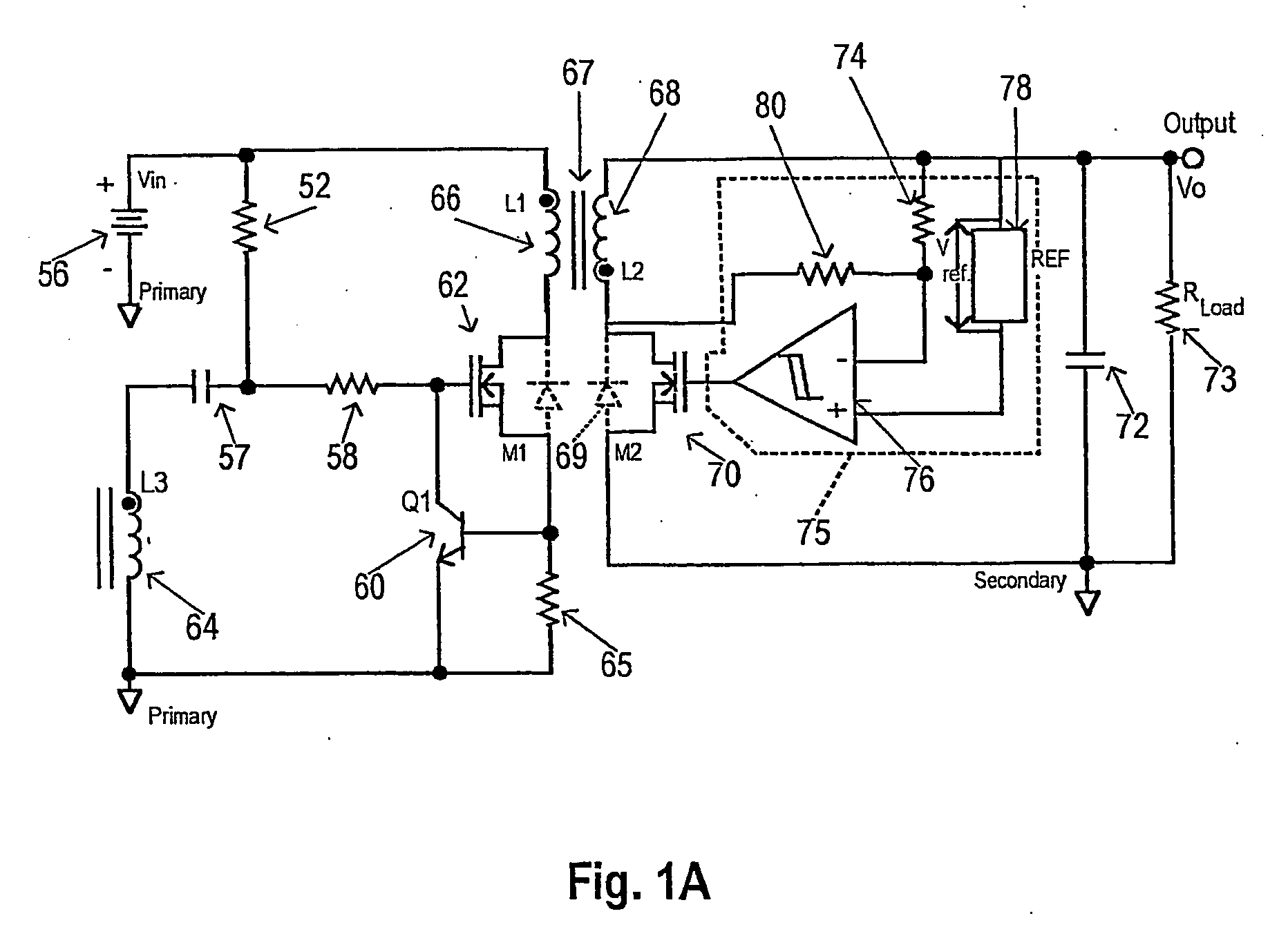Soft switching high efficiency flyback converter
a converter and high-efficiency technology, applied in the field of soft switching high-efficiency flyback converters, can solve the problems of no regulation, communication across the isolation boundary, add complexity and parts, etc., and achieve the effects of reducing the size of the converter, preventing switching losses, and good us
- Summary
- Abstract
- Description
- Claims
- Application Information
AI Technical Summary
Benefits of technology
Problems solved by technology
Method used
Image
Examples
Embodiment Construction
[0031] A semi-general illustration of the proposed concept applied to a self-oscillating flyback converter is illustrated in FIG. 1A with corresponding waveforms shown in FIG. 1B. Assume the converter is just powered up by applying an input voltage Vi from a DC voltage source 56. A resistor 52 charges a capacitor 57 and, through resistor 58, a gate capacitance of a MOSFET M1 acting as a primary switch 62. The MOSFET M1 turns ON when its gate threshold is reached. Voltage is applied to the primary winding 66 as the primary drain voltage 84 of M1 starts to go down at point T0 as illustrated in FIG. 1B. This in turn produces a voltage on winding a 64 which increases the primary gate voltage 82 on the MOSFET M1 further. This saturates the device. This is shown at point 83 in FIG. 1B. Primary current 86 ramps up at a rate dependent on the inductance of the primary winding 66. When the primary current 86 reaches a level, at point 85 in FIG. 1B, that produces a drop across a resistor 65 la...
PUM
 Login to View More
Login to View More Abstract
Description
Claims
Application Information
 Login to View More
Login to View More - R&D
- Intellectual Property
- Life Sciences
- Materials
- Tech Scout
- Unparalleled Data Quality
- Higher Quality Content
- 60% Fewer Hallucinations
Browse by: Latest US Patents, China's latest patents, Technical Efficacy Thesaurus, Application Domain, Technology Topic, Popular Technical Reports.
© 2025 PatSnap. All rights reserved.Legal|Privacy policy|Modern Slavery Act Transparency Statement|Sitemap|About US| Contact US: help@patsnap.com



